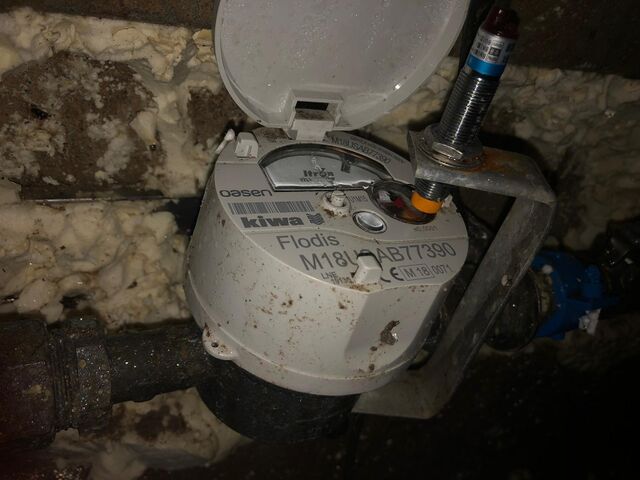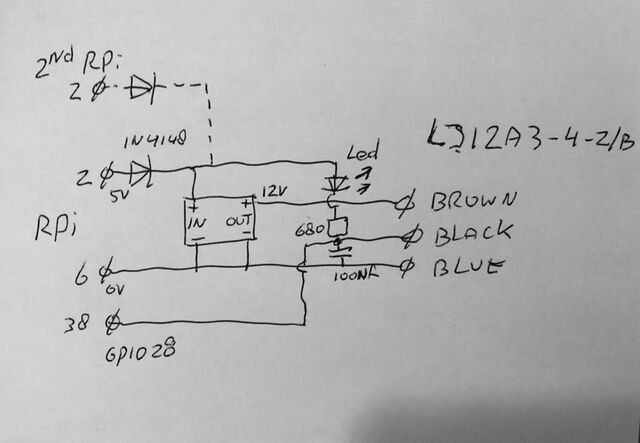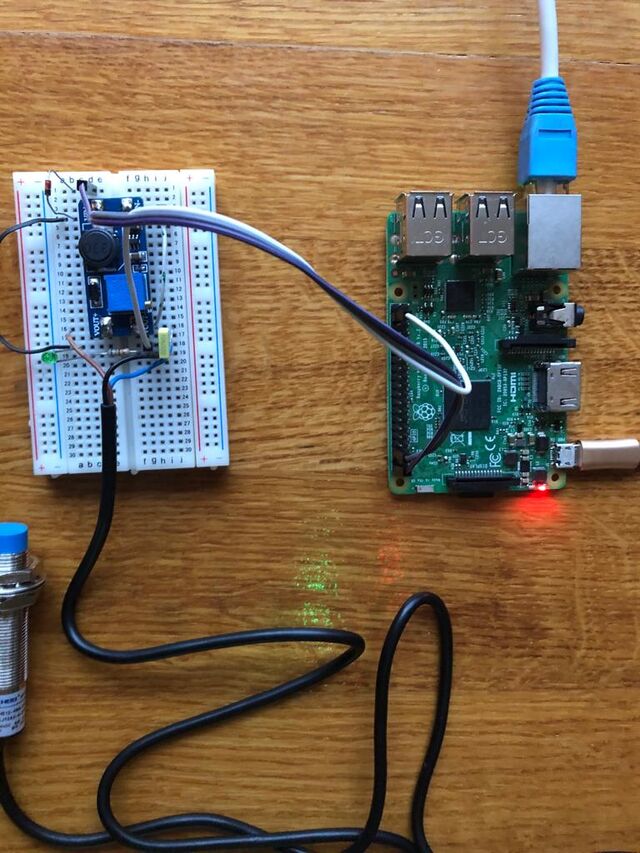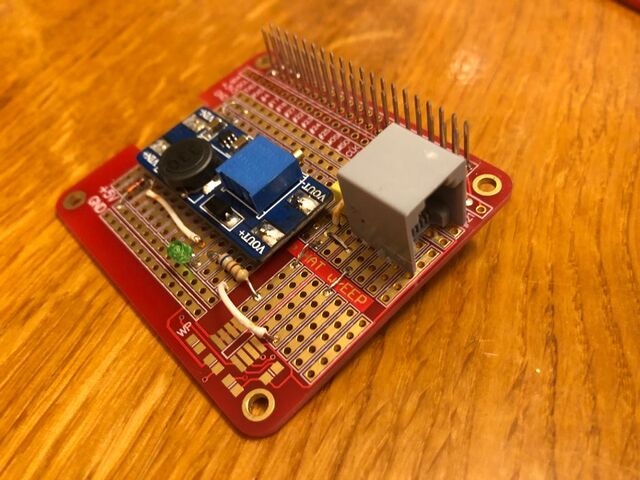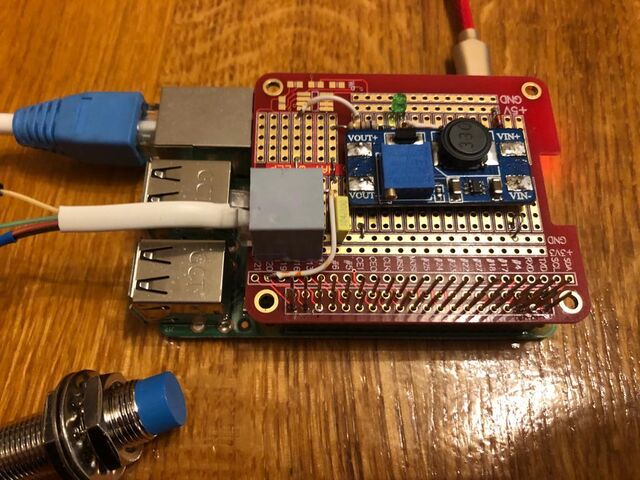Difference between revisions of "RPiWaterMeter"
| Line 5: | Line 5: | ||
It works with a magnetic sensor, which can be used because of the half-metal rotor of watermeters in my country (Netherlands)<br> | It works with a magnetic sensor, which can be used because of the half-metal rotor of watermeters in my country (Netherlands)<br> | ||
For magnetic sensor I use the LJ12A3-4-Z/B from the well known company in China. <br> | For magnetic sensor I use the LJ12A3-4-Z/B from the well known company in China. <br> | ||
| − | You can use most types but be sure to buy the OC (Open-Collector) version, because most sensors use higher voltages than the Raspberry Pi, and you won't damage your Pi<br><br> | + | You can use most types but be sure to buy the OC (Open-Collector) version, because most sensors use higher voltages than the Raspberry Pi, and you won't damage your Pi.<br><br> |
The sensor should be placed on the side of the rotator, not in the middle. | The sensor should be placed on the side of the rotator, not in the middle. | ||
<br><br> | <br><br> | ||
| Line 17: | Line 17: | ||
[[File:RPi_watermeter_schematics.jpeg|640px]] | [[File:RPi_watermeter_schematics.jpeg|640px]] | ||
</div> | </div> | ||
| − | The sensor needs 9-36 Volt, | + | The sensor needs 9-36 Volt, a Raspberry Pi only can deliver 5 and 3.3 Volt.<br> |
| − | I use an adjustable chopper board(also from China), adjusted as 12 Volt.<br> | + | You can use an extra 12 Volt adapter, but I don't like that......<br> |
| + | I use an adjustable chopper board (also from China), adjusted as 12 Volt.<br> | ||
If you want the same Board it's called:<br> | If you want the same Board it's called:<br> | ||
"MT3608 DC-DC Adjustable Boost Module Feed Converter Voltage Regulator Module 2A Max 2 V-24 V to 5 V-28 V"<br> | "MT3608 DC-DC Adjustable Boost Module Feed Converter Voltage Regulator Module 2A Max 2 V-24 V to 5 V-28 V"<br> | ||
Revision as of 18:35, 23 December 2020
Water usage mesurement with a Raspberry Pi
In my case I use Domoticz, but it also works with Home-Assist and other products.
It works with a magnetic sensor, which can be used because of the half-metal rotor of watermeters in my country (Netherlands)
For magnetic sensor I use the LJ12A3-4-Z/B from the well known company in China.
You can use most types but be sure to buy the OC (Open-Collector) version, because most sensors use higher voltages than the Raspberry Pi, and you won't damage your Pi.
The sensor should be placed on the side of the rotator, not in the middle.
With a piece of aluminium it's easy to mount on the meter:
Shematics:
The sensor needs 9-36 Volt, a Raspberry Pi only can deliver 5 and 3.3 Volt.
You can use an extra 12 Volt adapter, but I don't like that......
I use an adjustable chopper board (also from China), adjusted as 12 Volt.
If you want the same Board it's called:
"MT3608 DC-DC Adjustable Boost Module Feed Converter Voltage Regulator Module 2A Max 2 V-24 V to 5 V-28 V"
The output is connected to one of the GPIO's of the Pi, which first should configured as input, in my case I use GPIO28 (pin38/BCM20).
The led will show if it works, for every pulse 1 liter water is detected.
I use a Raspberry Pi Cluster, so I can do a failover, pin 2,6 and 38 are also wired to a second Pi,
for the Power a diode is needed, for each Pi, while it's a bad idea to connect the power to multiple Pi's.
First tested it with an experiment board:
To test it on a pi you need the gpio command:
if not installed:
sudo apt-get update
sudo apt-get install wiringpi
change GPIO 28 (BCM=20 and pin=38) as input:
sudo /usr/local/bin/gpio export 20 in
Put this line somewhere in a startup file, so it will stay that way, after reboot,
best below in /etc/rc.local (without sudo)
to show the states:
sudo gpio readall
This is the result:
All welded on an experiment board, for the Rpi, with a long pin connector, so you can stack other boards.
I use a RJ11 connector to connect the sensor.
Complete mounted on the Pi:
